After becoming a Mafia boss at the age of just 26, Joseph Bonanno spent decades as the head of a crime family before retiring in 1968 and eventually exposing some of the mob's biggest secrets.
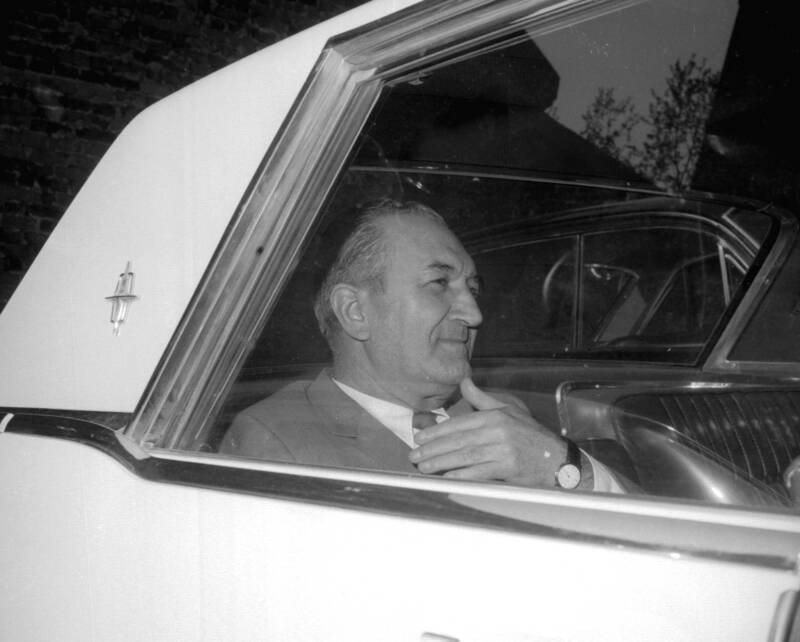
NY Daily News Archive via Getty ImagesJoseph Bonanno leaves a U.S. Federal Court after battling an indictment for failing to appear before a grand jury investigation in 1966. May 18, 1968. New York, New York.
When he released his autobiography in 1983 at the age of 78, Joseph Bonanno had lived the kind of life you’d want to read about. While still in his 20s, Bonanno became the boss of one of the most powerful Mafia families in New York and built up his very own criminal empire.
And unlike many other bosses, Bonanno wasn’t gunned down violently in the streets or arrested for murder, trafficking, or even tax fraud. He maintained a low profile for more than 30 years, helping to run the entire American Mafia organization quietly from behind the scenes.
In the 1960s, he was caught trying to have two of his rivals killed to cement his position as America’s most powerful Mob leader. Bonanno mysteriously vanished, reappearing 19 months later with claims that he’d been kidnapped — but many believe he went into hiding.
Then, remarkably, he was allowed to simply walk away and retire. This is the story of Joe Bonanno.
The Early Life Of Joseph Bonanno
Joseph Bonanno was born on Jan. 18, 1905, in Castellammare del Golfo, Sicily, the same area that spawned the Don of the Genovese crime family, Joe Masseria, and the Cosa Nostra boss Salvatore Maranzano.
Although the Bonannos left Sicily for the United States while Joe Bonanno was a young child, they only spent about 10 years in Brooklyn before returning to Italy.
It was back in Sicily that Bonanno was first introduced to the Mafia, and according to Selwyn Raab’s Five Families, it was Benito Mussolini’s crackdown on organized crime that motivated Bonanno to return to America without a visa in 1924.

Wikimedia CommonsJoe Bonanno left Sicily for the U.S. when Benito Mussolini began cracking down on Mafia activity.
With Prohibition providing opportunities for up-and-comers of all stripes, Bonanno joined the Maranzano crew when he was just 19 years old. He stood out early on because, in contrast to his criminal colleagues, he was a well-read man.
“Among my Sicilian friends, in America, I was always singled out as a man of learning, if for no other reason than my ability to recite from The Divine Comedy or to expound on a few passages from The Prince. Most of the men I knew in the New World were not what you would call bookish.” — Joseph Bonanno
He rose in the ranks of the Maranzano family, and when war broke out between powerful Mob families just a few years after his arrival in the U.S., Bonanno took advantage of the disorder to establish himself as a true leader.
According to former New York Police Department detective Ralph Salerno, Bonanno was “one of the people present at the creation of the whole thing — the American Mafia.”
How The Castellammarese War Helped Joe Bonanno Rise In The Ranks
The Castellammarese War was a year-long power struggle for dominance of the Italian-American Mafia between 1930 and 1931. The two warring factions were led by Joe “The Boss” Masseria and Salvatore Maranzano — Joe Bonanno’s countrymen from Sicily.
Bonanno had been hired as Maranzano’s enforcer, protecting his distilleries and doling out punishment wherever needed. He called Prohibition “the golden goose” and considered his time under Maranzano as an apprenticeship.

Wikimedia CommonsJoe “The Boss” Masseria was murdered while eating dinner and playing cards at a Coney Island restaurant. His death ended the year-long Castellammarese War.
According to Carl Sifakis’ The Mafia Encyclopedia, the fight was between the old guard and the young bloods. The old-timers held to traditional views of old-world organized crime, including strict fealty to more senior Dons and the prohibition against doing business with non-Italians.
This was what Masseria was protecting. He had notable Mob figures like Charles “Lucky” Luciano, Vito Genovese, Joe Adonis, Carlo Gambino, Albert Anastasia, and Frank Costello (future mentor of Harlem’s Bumpy Johnson) fighting for him.
The other side saw younger, up-and-coming crews like Maranzano’s look to the future. They didn’t care what nationality a promising business partner held, and they felt it unwarranted to pay fealty simply for seniority’s sake.
After a year of bloody deaths, men like Luciano and Genovese grew tired of the war and its effect on business. They reached out to Maranzano and struck a deal: Luciano would kill Masseria, and Maranzano would end the war.
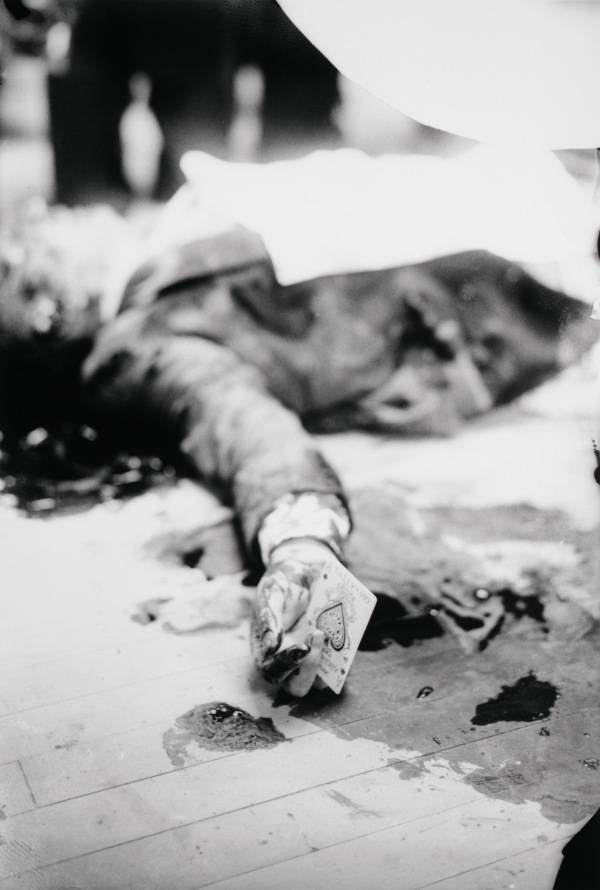
Bettmann/Getty ImagesJoe Masseria shortly after his assassination.
Masseria was fatally shot while eating dinner at Coney Island’s Nuova Villa Tammaro restaurant on April 15, 1931. Nobody was convicted, nobody saw a thing, and Luciano had a rock-solid alibi. The war was over.
Restructuring The Mafia: The Five Families
With the war won, Maranzano reorganized the Italian-American Mob. The Five Families of New York were to be headed by Luciano, Joseph Profaci, Thomas Gagliano, Vincent Mangano, and Maranzano. All would owe tribute to Maranzano, who was now capo di tutti i capi — boss of all bosses.
This new structure established the now-familiar hierarchy of boss, underboss, crews, caporegime (or capo), and soldiers (or “wise guys”). Maranzano’s reign didn’t last long, however, as he was shot and stabbed to death in his office on Sept. 10, 1931.
This is when Joe Bonanno inherited his boss’s stake and became one of the youngest leaders of a crime family at the age of 26.
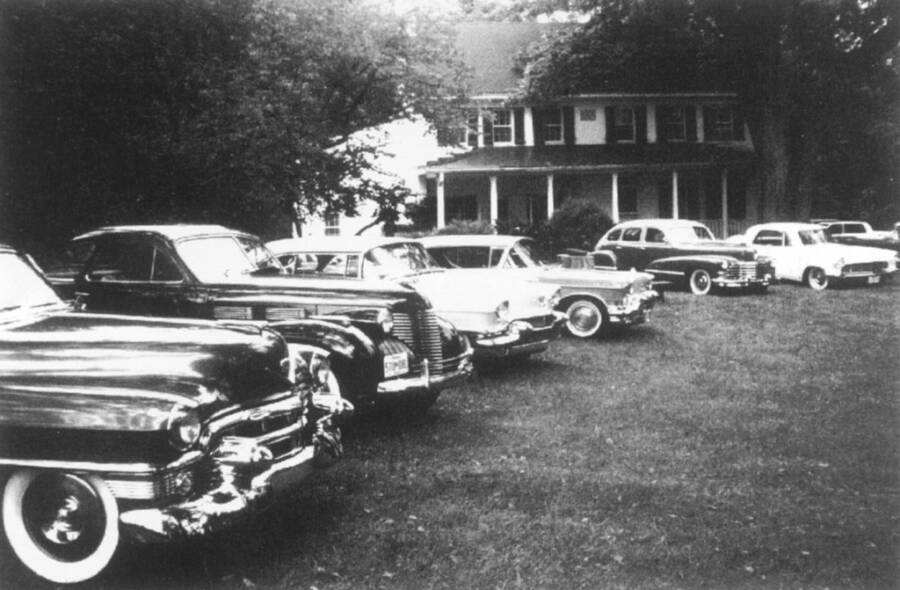
Wikimedia CommonsAll the major Mob bosses attended the Apalachin meeting of 1957 to discuss narcotics trafficking and more. The FBI raided it and arrested several members. The vehicles parked outside weren’t exactly subtle for the time.
Luciano assumed control of the newly-organized Mafia, but he decided to keep Maranzano’s blueprint intact. He aimed to regulate the modern Mafia like a corporation, calling it “The Commission.”
This council allowed family bosses to discuss affairs and vote on disputes before they turned into violence.
He allowed all nationalities to participate — as long as they raked in profit. According to Bonanno, this led to decades of semi-peaceful organized crime.
“For nearly a thirty-year period after the Castellammarese War no internal squabbles marred the unity of our Family and no outside interference threatened the Family or me,” he later wrote. But that would eventually change.
The Bonanno Family And The Bonanno War
The Bonanno crime family was small but effective. With Frank Garofalo and John Bonventre as underbosses, Bonanno’s faction ran the gamut from loan sharking and bookmaking to numbers running, prostitution, and real estate.
Since Joe Bonanno’s secretive 1924 entry into the U.S. made him an undocumented immigrant, he left the country in 1938 in order to re-enter legally and apply for citizenship. It was granted years later in 1945.
To his credit, Bonanno was never convicted, charged, or arrested — not even once — during his criminal career. Even during the Apalachin meeting of 1957, a summit of the American Mafia where issues like drug trafficking were discussed, he avoided being arrested by the FBI.
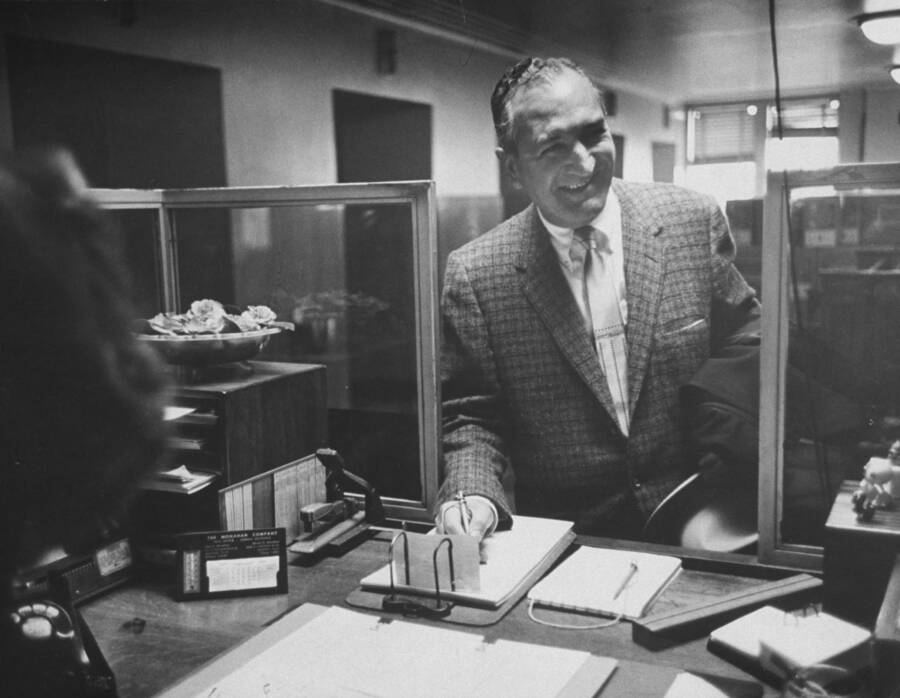
Bill Bridges/The LIFE Images Collection via Getty ImagesJoseph Bonanno two years after evading arrest during the Apalachin meeting. Bonanno was into narcotics trafficking, money laundering, prostitution, and loan sharking. February 1959.
It was a failed hit that led to real trouble for Bonanno. When his friend Joe Profaci died in 1962, the Profaci Crime Family was handed over to Joe Magliocco. Amidst the instability, Tommy Lucchese and Carlo Gambino formed an alliance, which led Bonanno to meet with Magliocco to plan their murders. His ultimate plan was to take over The Commission.
Joe Colombo was hired for the hit, but instead, he told his targets that Magliocco had sent him. They knew that Magliocco wasn’t working alone and identified Bonanno as his partner. When The Commission demanded that the two be questioned, Bonanno didn’t show.
At the same time, Bonanno was subpoenaed to testify before a grand jury investigating organized crime. Faced with two uncomfortable appointments on either side of the law, Bonanno fled and went into hiding in October 1964. Leaderless, control of the Bonanno Crime Family was handed over to Gaspar DiGregorio.
The Return Of Joe Bonanno
When Joe Bonanno resurfaced in May 1966, he claimed to have been kidnapped by the Buffalo Crime Family’s Peter and Antonino Magaddino — which was almost certainly a lie.
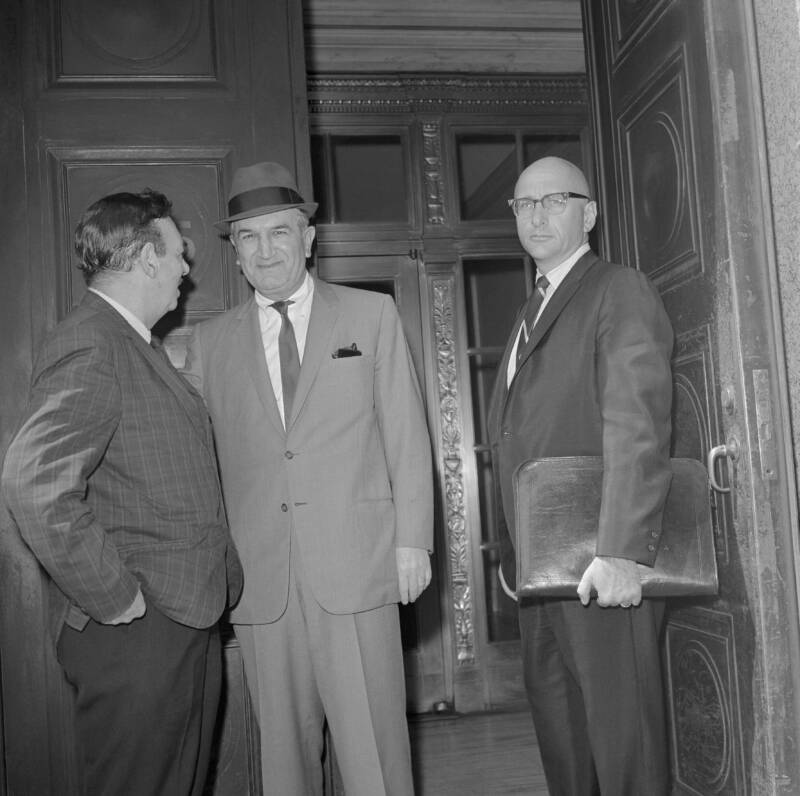
Bettmann/Getty ImagesJoseph Bonanno (center) talking to UPI reporter Robert Evans on the steps of a federal courthouse after resurfacing from his two-year disappearance. He’s accompanied by his attorney, Albert J. Krieger (right). May 17, 1966. New York, New York.
He was then indicted for his failure to appear before a grand jury, but he challenged the indictment for five years until its dismissal in 1971.
With the Bonanno family split apart — with DiGregorio loyalists on one side and faithful Bonanno devotees on the other — Bonanno struggled to rally a crew that was as tight as it once was.
Nonetheless, he tried, with violence erupting at a sit-down in Brooklyn in 1966. Nobody died at that meeting, but the warring continued — and then Bonanno did the unthinkable. He announced his retirement in 1968.
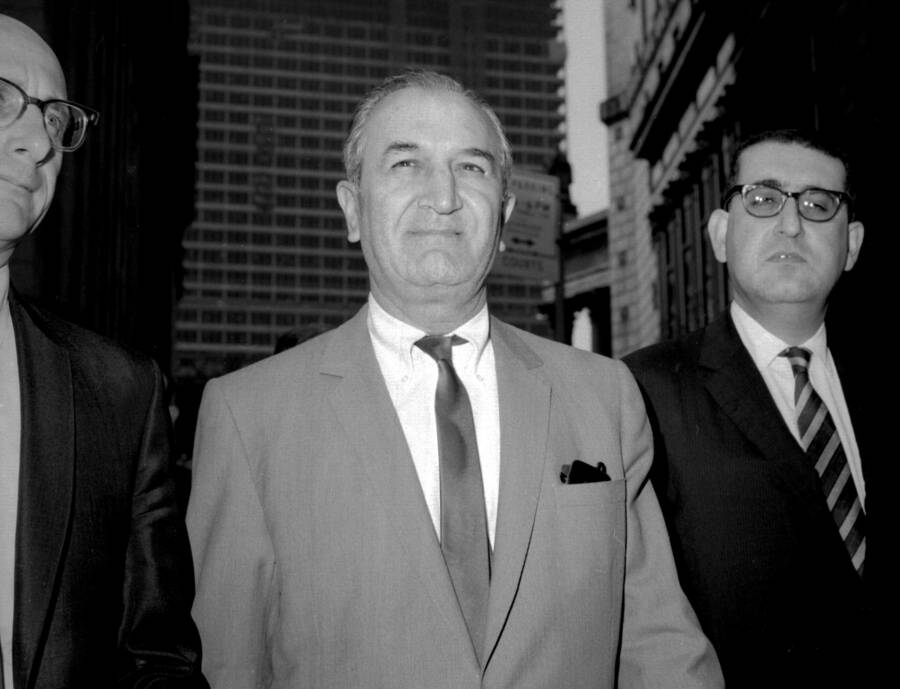
NY Daily News Archive/Getty ImagesJoe Bonanno leaving U.S. Federal Court with his attorney, Albert Krieger, on May 18, 1968. New York, New York.
This usually doesn’t go over well. Once you’re in the Mob, you don’t just get to walk away. But with Bonanno’s status as a former boss and his promise never to involve himself in the Mafia again, The Commission accepted his terms. They stipulated, however, that should he break them he would be killed on sight.
Joe Bonanno’s Life After The Mafia
According to The New York Times, Joseph Bonanno was convicted for the first time in his life at the age of 75 in 1980. Charged with conspiracy to obstruct justice, a jury found him guilty of attempting to block a grand jury investigation into alleged money laundering through companies owned by his sons. He spent a year in prison for the crime.
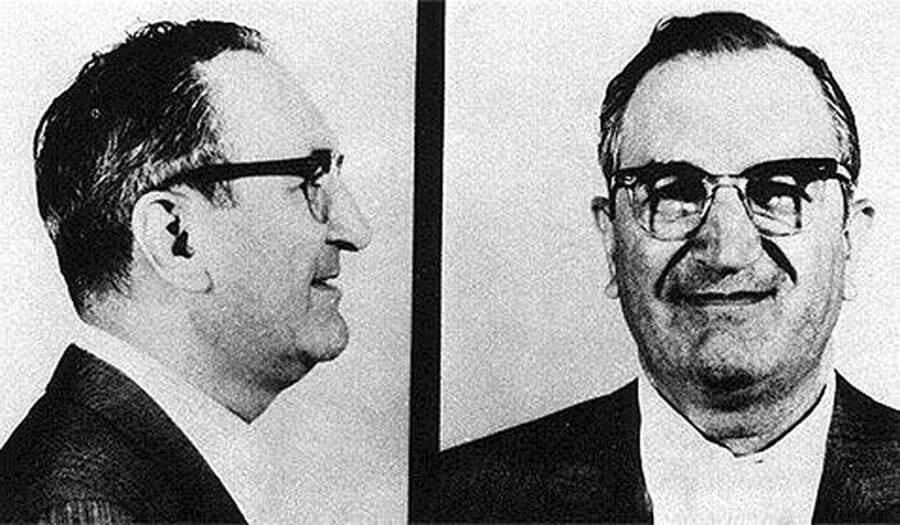
Wikimedia CommonsJoe Bonanno was charged with conspiracy to obstruct justice and convicted at the age of 75 in 1980. It was his first arrest.
Then, in 1983, Joe Bonanno did the unthinkable once more — and released an autobiography about his time in the Mafia.
Although Bonanno’s literary career violated the Mafia’s code of secrecy, or omertà, perhaps more flagrant to the Mob was Bonanno’s appearance on 60 Minutes with Mike Wallace in April 1983. By then, however, he was a civilian, and his work was out in the open for all to see.
In 1985, during a New York racketeering trial against leaders of the Five Families, Rudy Giuliani, then-U.S. Attorney in Manhattan, pressed Bonanno about statements he had made in his autobiography — namely about the existence of The Commission. However, he told the government nothing during the trial. He was imprisoned again for 14 months for refusing to testify.
Joe Bonanno passed away from heart failure on May 11, 2002 — leaving behind one hell of a story of the rise of the American Mafia.
After learning about Joe Bonanno, the Sicilian immigrant who became the boss of one of New York’s Five Families of organized crime before safely retiring, read about Paul Castellano’s brazen assassination and the rise of John Gotti. Then, learn the true story of “Donnie Brasco” and Joseph Pistone’s undercover fight against the Mafia.





